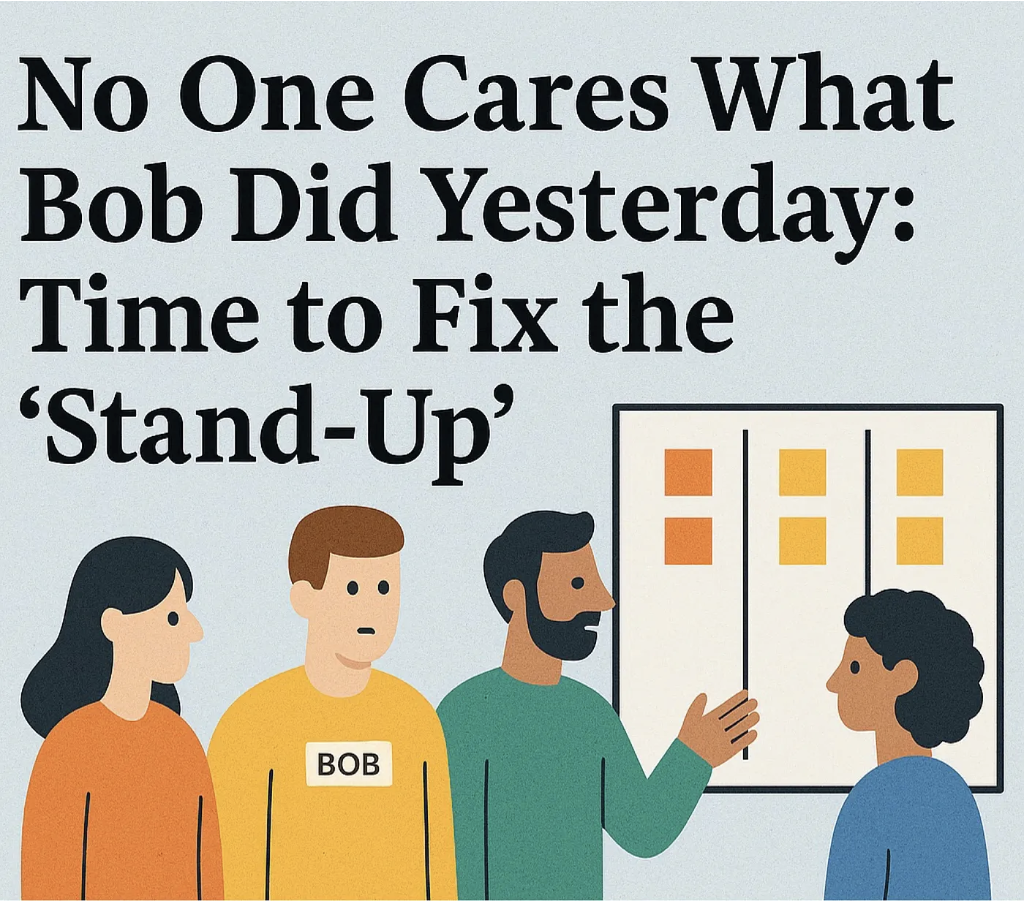The Misguided Manager
Well…probably the semi-misguided manager.
Getting promoted to Manager of Software Engineering about a dozen years ago was a big deal for me. Having led teams for a few years, this seemed like the logical next step, but in a relatively flat organization, the position did not even exist. Not only was the position created within my department, but I was one of the first people to be given the opportunity to take it on as well.
Traditional Management Advice
Luckily for me, I had a great number of experienced managers in other departments around to learn from. What should I, as a new manager, focus on? What curveballs should I expect? How do I deal with them? Going to my peers, I received a lot of great advice. A few folks even bought me management books, which I devoured. I wanted to know everything so that I did not fail in my new role. Further, I wanted to stand out in this new role. As more advancement opportunities showed up, I wanted to be the first name considered for them.

Most of the advice I received was about people management. How do I take care of the people I was supposed to support? What should be the cadence of 1:1s? What should be the format of our conversations? What was the best way to make sure people felt that they were being supported?
None of this was incorrect or harmful advice. It was great when it came to people management. The problem was that the advice made it seem like people management was the only thing a manager of a software development team was supposed to do.
Managing the Flow of Value
Managing the flow of work was always more of a core competency for me than managing people. Since that is what came naturally, that is where I focussed — What are all the things getting in the way of my team sustainably flowing value to customers? Everything else was in support of this. Every team I ever managed, that was the key — Improving the flow of value to customers.
Taking a step back, that is what we, as leaders, are paid to do. Make sure that there is a sustainable flow of value to customers. Moving to higher levels of management, all the concepts remained the same, just the level of flow changed. As a Director of Engineering, instead of worrying about the flow of stories, I was now worried about the flow of Features and Epics.

Tools of The Trade — Flow Metrics
The simplest, most natural way to manage flow is through flow metrics. Paying attention to the four core flow metrics for my teams helped me spot issues early and take interventions only when needed. Since the metrics were auto-generated, I did not have to bother my teams for status. A simple look at the Kanban board and Actionable Agile (by 55 degrees) told me everything I needed to know about the flow of work.
The four Flow Metrics are-
Work In Progress — The number of work items started but not finished.
Throughput — The number of work items finished per unit of time. Measurement is the exact count of work items.
Cycle Time — The amount of elapsed time between when a work item started and when a work item finished.
Work Item Age — The amount of elapsed time between when a work item started and the current time
The interesting bit here is the same metrics also gave an indication of the how the team was doing from a people context. If WIP was too high, it meant the people were overloaded. Work Item Age told me that things were going off track and something was in the way of work getting done. A clear flag that my help was needed. Cycle Times represented the amount of time it was taking for the team to get customer feedback. Finally, Throughput was a clear indication of a sustainable, predictable pace.
Not only did these metrics help with managing flow, but they also helped management from a people context. The curse of being a middle manager though is that you have responsibilities in both directions — to the folks you support and the folks that support you. In other words, we need to speak the language of the business as well. Understanding the business impact of work is an easy way to ensure your career progression. Luckily, Flow Metrics also help us in this regard.
Cycle Time is the investment we made in a delivered item. WIP is the number of things we are investing in at the same time. Throughput is the number of investments showing return. Work Item Age is the amount of investment we have made in an item without it becoming capable of showing returns.

Career Advancement
An understanding of flow is a great way to advance your career if you are on the management path. Yes, people management is still an important part of the job. The beauty of managing flow is that you are achieving parts of people management and more. Being a leader who can manage flow well will help you stand out amongst your peers. From the perspectives of the entities you serve, it will help you deliver what they all need —
Customers — Frequent and timely delivery of value.
Employees — Sustainable pace where they are not overburdened.
Business — Greater returns while minimizing investments.
And of course, as a consequence —
Sr. Management — Making their department look good.
An understanding of flow and Kanban might not be enough to get you hired, but once hired, these are the easiest ways to help your career progress. It helps everyone around you, your customers, employees, the business, and senior management achieve their goals.
Management
I do not claim to understand every aspect of management. But then, that is the point. There are multiple aspects of management, and no one really does understand all of them. The problem is that most guidance around management focuses only on the people management aspect of the job. Flow management, in my opinion, is often more important as it delivers on multiple fronts, including people management. It is a critical skill for managers to develop so they can succeed in producing successful teams, organizations, and customers.
Do not be the (semi) misguided manager. Look at your career not just from a people lens but also a flow lens.



